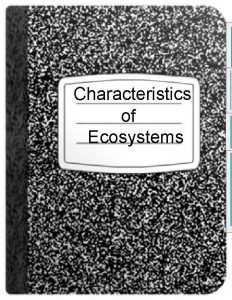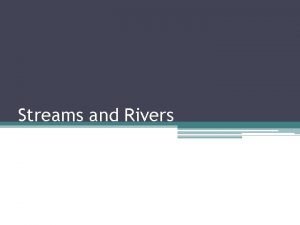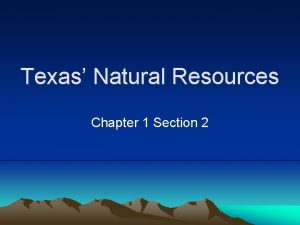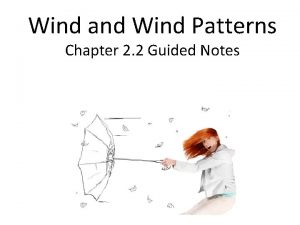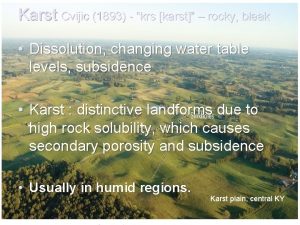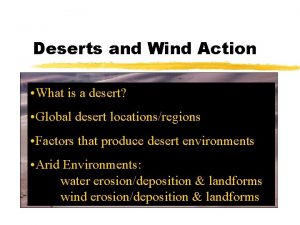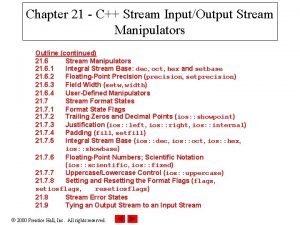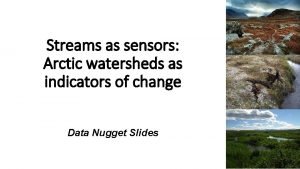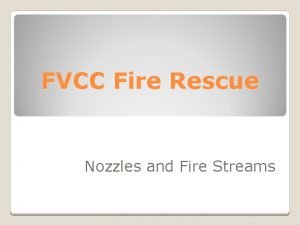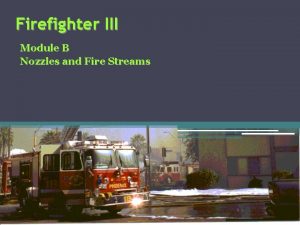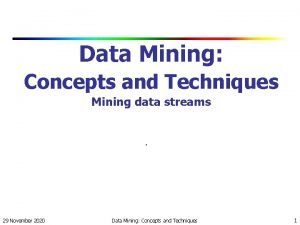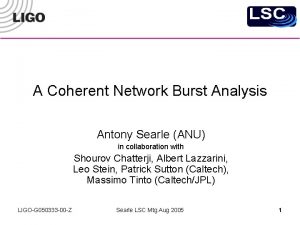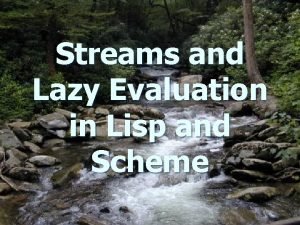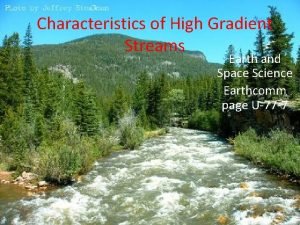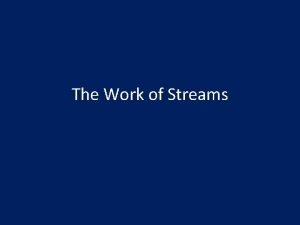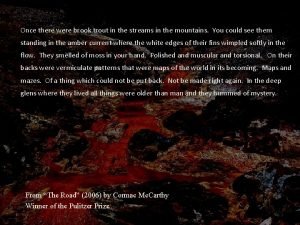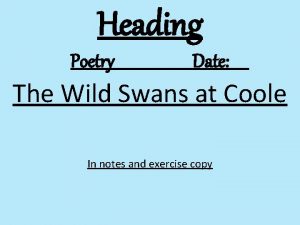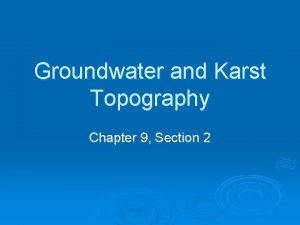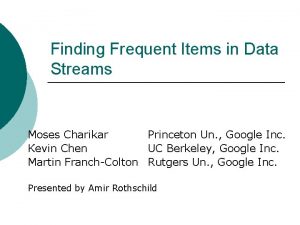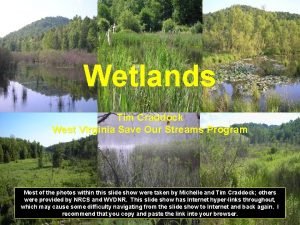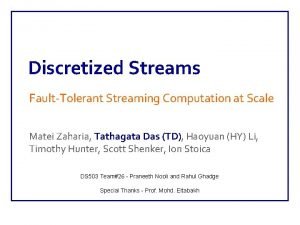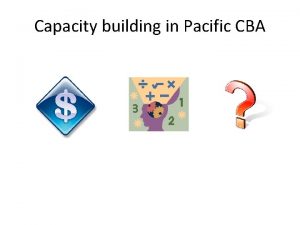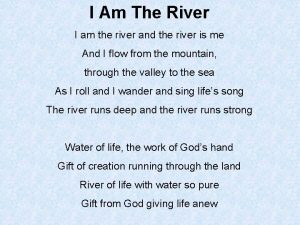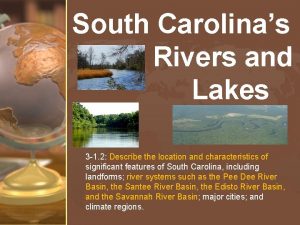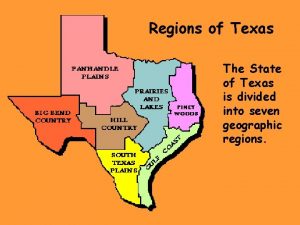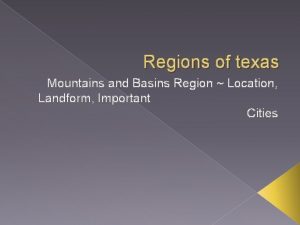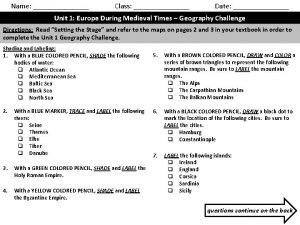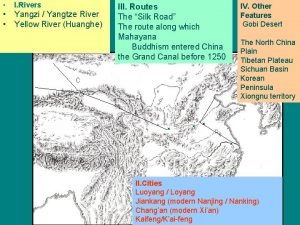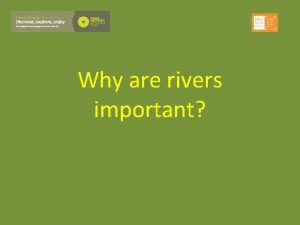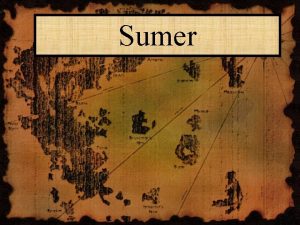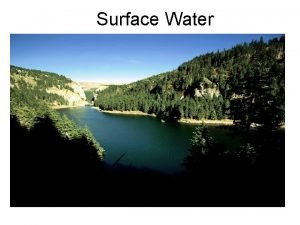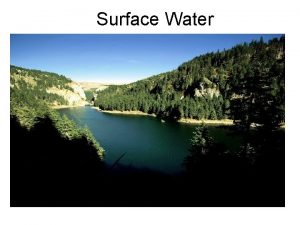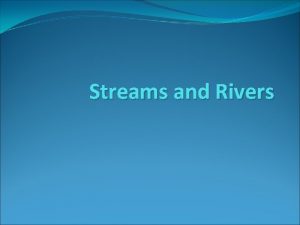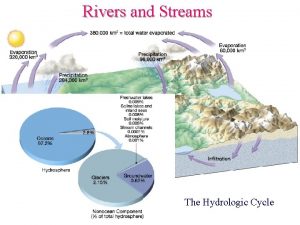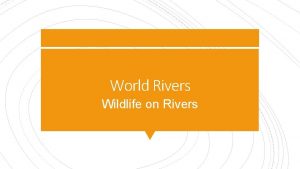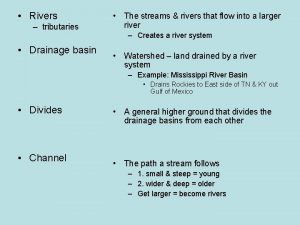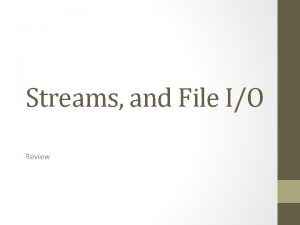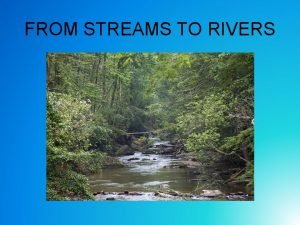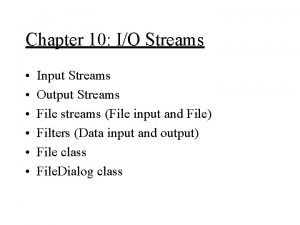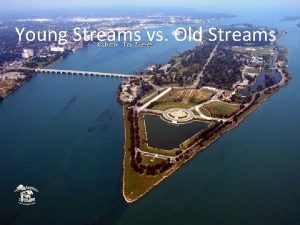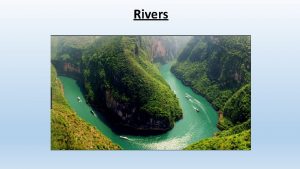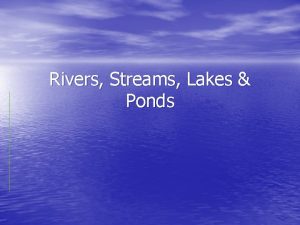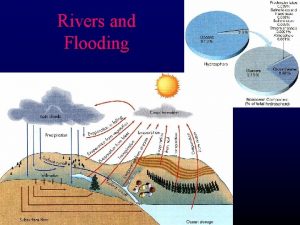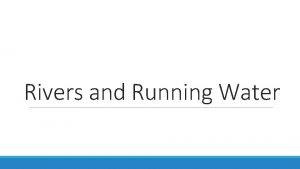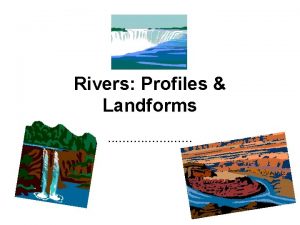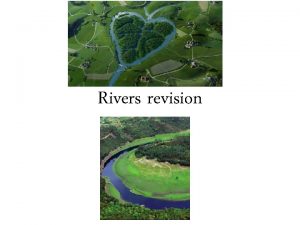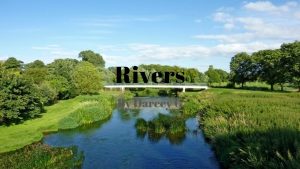Rivers and Streams River Systems A river or















































- Slides: 47

Rivers and Streams

River Systems • A river or stream: any body of water flowing downhill in a well defined channel • Drainage basin • Drainage divide




• Divided into 3 subsystems – Collecting system – Transporting system – Dispersing system


Stream System Order -Tributaries decreases downstream -Tributary length increases downstream -Gradient decreases downstream -Channels are wider deeper downstream


Common Drainage Patterns


Stream Flow Dynamics • Factors affecting stream behavior • Discharge (Q) • Gradient • Average velocity (V) • Channel cross-sectional area (A) • Load • Base level

Stream Flow Dynamics • Discharge • The volume of water flowing past a given point in the river • Discharge will vary with time and weather conditions • Measured in cubic meters per second


• Gradient – The slope of the stream channel – Change in elevation divided by distance (m/km) – Longitudinal profile is a concave upward • Steep at headwaters • Nearly flat at discharge area



• Velocity varies within the channel – Highest velocity is in the center of the channel – Drag slows water along the bottom, banks, and top (water-air interface)


• Load – Material carried along by the stream • Suspended load (fine particles) or • Bed load (coarse particles) • Dissolved load (ions in solution)



• Base Level - level to which a stream will erode

Graded Stream

Stream Erosion • River systems erode the land surface by: – Removal of weathering products – Downcutting of stream channel – Headward erosion

Downcutting of Channels • Bottom of stream channel abraded by transported sand & gravel


Headward Erosion • Erosion rates are greatest where stream gradients are high


Headward erosion of a plateau


Stream Deposition – Floodplains – Deltas – Alluvial valleys and fans

Meandering Streams • Rivers flow in a sinuous pattern – Turbulent flow & velocity changes eroded one bank, deposit on the other – Erosion changes course of river



River at Flood Stage Floodplain Main Channel

Floodplains • Floods – Normal stage - water level below the bank – Bankfull stage - water level even with the bank – Flood stage - water level above the bank • Floodplains – Areas that will be submerged when a river is at flood stage

Braided Streams • Multiple channel system – Interlaced channels with islands – High sediment load – Common in arid & semi-arid regions • Seasonal high flows – Common in front of glaciers • Large sediment load, fluctuating water flow




Alluvial Valleys • Streams fill part of their valleys with sediment – Changes in hydrologic conditions initiate deposition – Subsequently cut through deposits • Create terraces

Deltas • Formed by sudden drop in velocity – Stream enters ocean or lake – Stream drops sediment load – Evolve by three mechanisms – Growth may be influenced by ocean waves

Delta Growth • Distributaries – Levee and in-stream deposit formation – Channel splits into two smaller channels • Splays – Crevasse allow water to leave main channel – Water spreads out forming a splay deposit • Avulsion – Shift in main course to follow steeper slope


Alluvial Fans • Accumulation of sediment in a dry basin – Deposition due to rapid velocity drop – Usually arid climate – High sediment load - braided streams – Form fan-shaped deposit

Alluvial fans in Death Valley
 Bill nye rivers and streams answers
Bill nye rivers and streams answers Middle course of a river
Middle course of a river Why are some rivers in texas called “wrong way” rivers?
Why are some rivers in texas called “wrong way” rivers? Travelers among mountains and streams
Travelers among mountains and streams Youtube
Youtube Cost streams
Cost streams Oracle streams
Oracle streams Karst topography
Karst topography Sand dune migration
Sand dune migration Cout setf ios fixed
Cout setf ios fixed Data nugget streams as sensors answers
Data nugget streams as sensors answers Broken stream fire nozzle
Broken stream fire nozzle 3 types of fire streams
3 types of fire streams Oracle streams
Oracle streams Basic concepts in mining data streams
Basic concepts in mining data streams A framework for clustering evolving data streams
A framework for clustering evolving data streams Streams anu
Streams anu 2140705
2140705 Stream lazy evaluation
Stream lazy evaluation Adiabatic chemical dehumidification
Adiabatic chemical dehumidification Java programs perform i/o through ……….. *
Java programs perform i/o through ……….. * Erosion definition
Erosion definition Most streams carry the largest part of their load
Most streams carry the largest part of their load Once there were brook trout in the streams in the mountains
Once there were brook trout in the streams in the mountains Wild swans at coole form
Wild swans at coole form Disappearing streams karst topography
Disappearing streams karst topography Vvvnn.com reviews
Vvvnn.com reviews Finding frequent items in data streams
Finding frequent items in data streams Ibm business model canvas
Ibm business model canvas Tim craddock
Tim craddock Business model canvas key partner
Business model canvas key partner Perforce introduction
Perforce introduction Perforce virtual streams
Perforce virtual streams Discretized stream
Discretized stream Cba streams
Cba streams There's a place where streams of grace
There's a place where streams of grace I am the river and the river is me
I am the river and the river is me South carolina rivers and lakes
South carolina rivers and lakes Geographical regions of texas
Geographical regions of texas Label the niger and senegal rivers
Label the niger and senegal rivers Mountains and basins industry
Mountains and basins industry Label the seine thames elbe tiber and danube rivers
Label the seine thames elbe tiber and danube rivers Huang he and yangtze rivers
Huang he and yangtze rivers Green river (duwamish river tributary)
Green river (duwamish river tributary) Decision support systems and intelligent systems
Decision support systems and intelligent systems Why are rivers important
Why are rivers important Symbol of a river
Symbol of a river 2 rivers in mesopotamia
2 rivers in mesopotamia
